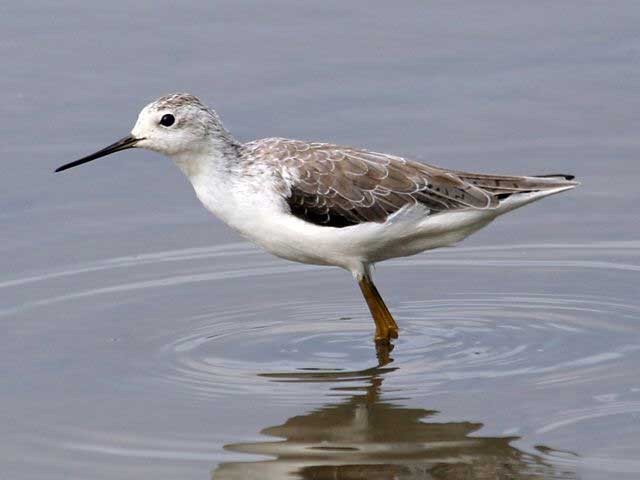
Tringa stagnatilis (*)
Superregnum: Eukaryota
Regnum: Animalia
Subregnum: Eumetazoa
Cladus: Bilateria
Cladus: Nephrozoa
Superphylum: Deuterostomia
Phylum: Chordata
Subphylum: Vertebrata
Infraphylum: Gnathostomata
Megaclassis: Osteichthyes
Superclassis: Sarcopterygii
Superclassis: Tetrapoda
Cladus: Reptiliomorpha
Cladus: Amniota
Classis: Reptilia
Cladus: Eureptilia
Cladus: Romeriida
Subclassis: Diapsida
Cladus: Sauria
Infraclassis: Archosauromorpha
Cladus: Crurotarsi
Divisio: Archosauria
Cladus: Avemetatarsalia
Cladus: Ornithodira
Subtaxon: Dinosauromorpha
Cladus: Dinosauriformes
Cladus: Dracohors
Cladus: Dinosauria
Ordo: Saurischia
Cladus: Eusaurischia
Cladus: Theropoda
Cladus: Neotheropoda
Cladus: Averostra
Cladus: Tetanurae
Cladus: Avetheropoda
Cladus: Coelurosauria
Cladus: Tyrannoraptora
Cladus: Maniraptoromorpha
Cladus: Maniraptoriformes
Cladus: Maniraptora
Cladus: Pennaraptora
Cladus: Paraves
Cladus: Eumaniraptora
Cladus: Avialae
Infraclassis: Aves
Cladus: Euavialae
Cladus: Avebrevicauda
Cladus: Pygostylia
Cladus: Ornithothoraces
Cladus: Euornithes
Cladus: Ornithuromorpha
Cladus: Ornithurae
Cladus: Carinatae
Parvclassis: Neornithes
Cohors: Neognathae
Cladus: Neoaves
Ordo: Charadriiformes
Subordo: Charadrii
Familia: Scolopacidae
Genus: Tringa
Species: Tringa stagnatilis
Name
Tringa stagnatilis (Bechstein, 1803)
Synonyms
Totanus stagnatilis (protonym)
References
Ornithologisches Taschenbuch von und für Deutschland: 292, pl.29.
Vernacular names
Afrikaans: Moerasruiter
العربية: طيطوى البطاح
asturianu: Chibibí Finu
azərbaycanca: Çay cüllütü
беларуская: Кулік-паручайнік
български: Малък зеленокрак водобегач
বাংলা: বিল বাটান
brezhoneg: Ar strelleg-stank
català: Camaverda menuda
čeština: Vodouš štíhlý
Cymraeg: Pibydd y gors
dansk: Damklire
Deutsch: Teichwasserläufer
ދިވެހިބަސް: Furedhdhe Ilolhi
Ελληνικά: Βαλτονεραλλίδα
English: Marsh Sandpiper
Esperanto: Marĉotringo
español: Archibebe Fino
eesti: Lammitilder
euskara: Siseta
suomi: Lampiviklo
føroyskt: Vatnastelkur
français: Chevalier stagnatile
Gaeilge: Gobadán Corraigh
galego: Bilurico fino
עברית: ביצנית עדינה
हिन्दी: Kottan
hrvatski: Dugonoga prutka
magyar: Tavi cankó
հայերեն: Առափնյա կտցար
Bahasa Indonesia: Burung Trinil Rawa
íslenska: Vatnastelkur
italiano: Albastrello
日本語: コアオアシシギ
ქართული: მერუე
қазақша: Бұлақшы
한국어: 쇠청다리도요
Lëtzebuergesch: Kleng Gréngpatt
lietuvių: Kūdrinis tilvikas
latviešu: Dīķu tilbīte
македонски: Мала зеленонога
монгол: Бүрдний хөгчүү - ᠪᠦᠷᠢᠳᠦᠨ ᠦ ᠬᠦᠭᠡᠴᠦ
Bahasa Melayu: Burung Kedidi Paya
Malti: Ċewċewwa Żgħira
Nederlands: Poelruiter
norsk: Damsnipe
polski: Brodziec pławny
português: Perna-verde-fino
rumantsch: Trintga da puz
română: Fluierar de lac
русский: Поручейник
slovenčina: Kalužiak štíhly
slovenščina: Jezerski martinec
shqip: Qyrylyk sqephollë
српски / srpski: Dugonogi prudnik - Дугоноги прудник
svenska: Dammsnäppa
Kiswahili: Chamchanga-wangwa
தமிழ்: சின்ன பச்சைக் காலி
ไทย: นกชายเลนบึง
Türkçe: Bataklık düdükçünü
українська: Коловодник ставковий
Tiếng Việt: Chim Choắt đốm đen
中文: 泽鹬
The marsh sandpiper (Tringa stagnatilis) is a small wader. It is a rather small shank, and breeds in open grassy steppe and taiga wetlands from easternmost Europe to the Russian Far East. The genus name Tringa is the New Latin name given to the green sandpiper by Aldrovandus in 1599 based on Ancient Greek trungas, a thrush-sized, white-rumped, tail-bobbing wading bird mentioned by Aristotle. The specific stagnatilis is from Latin stagnum, "swamp".[2]
Marsh Sandpiper in Pallikaranai Chennai
Description
It resembles a small elegant greenshank, with a long fine bill and very long yellowish legs. Like the greenshank, it is greyish brown in breeding plumage, paler in winter, and has a white wedge up its back that is visible in flight. However, it is more closely related to the common redshank and the wood sandpiper.[3] Together, they form a group of smallish shanks which tend to have red or reddish legs, and in breeding plumage are generally a subdued, light brown above with some darker mottling, with a pattern of somewhat diffuse small brownish spots on the breast and neck. The length is 22–26 cm (8.7–10.2 in), wingspan is 55–59 cm (22–23 in) and weight is 45–120 g (1.6–4.2 oz).[4]
Distribution
Palearctic.It is a migratory species, with majority of birds wintering in Africa, and India with fewer migrating to Southeast Asia and Australia. They prefer to winter on fresh water wetlands such as swamps and lakes and are usually seen singly or in small groups.
Egg, Collection Museum Wiesbaden
These birds forage by probing in shallow water or on wet mud. They mainly eat insects, and similar small prey.
The marsh sandpiper is one of the species to which the Agreement on the Conservation of African-Eurasian Migratory Waterbirds (AEWA) applies.
References
BirdLife International (2016). "Tringa stagnatilis". IUCN Red List of Threatened Species. 2016: e.T22693216A86691256. doi:10.2305/IUCN.UK.2016-3.RLTS.T22693216A86691256.en. Retrieved 13 November 2021.
Jobling, James A (2010). The Helm Dictionary of Scientific Bird Names. London: Christopher Helm. pp. 364, 390. ISBN 978-1-4081-2501-4.
Pereira, Sérgio Luiz; Baker, Alan J. (2005). "Multiple Gene Evidence for Parallel Evolution and Retention of Ancestral Morphological States in the Shanks (Charadriiformes: Scolopacidae)". Condor. 107 (3): 514–526. doi:10.1650/0010-5422(2005)107[0514:MGEFPE]2.0.CO;2.
"Marsh Sandpiper". Oiseaux-birds.com. Retrieved 2011-10-19.
Retrieved from "http://en.wikipedia.org/"
All text is available under the terms of the GNU Free Documentation License

